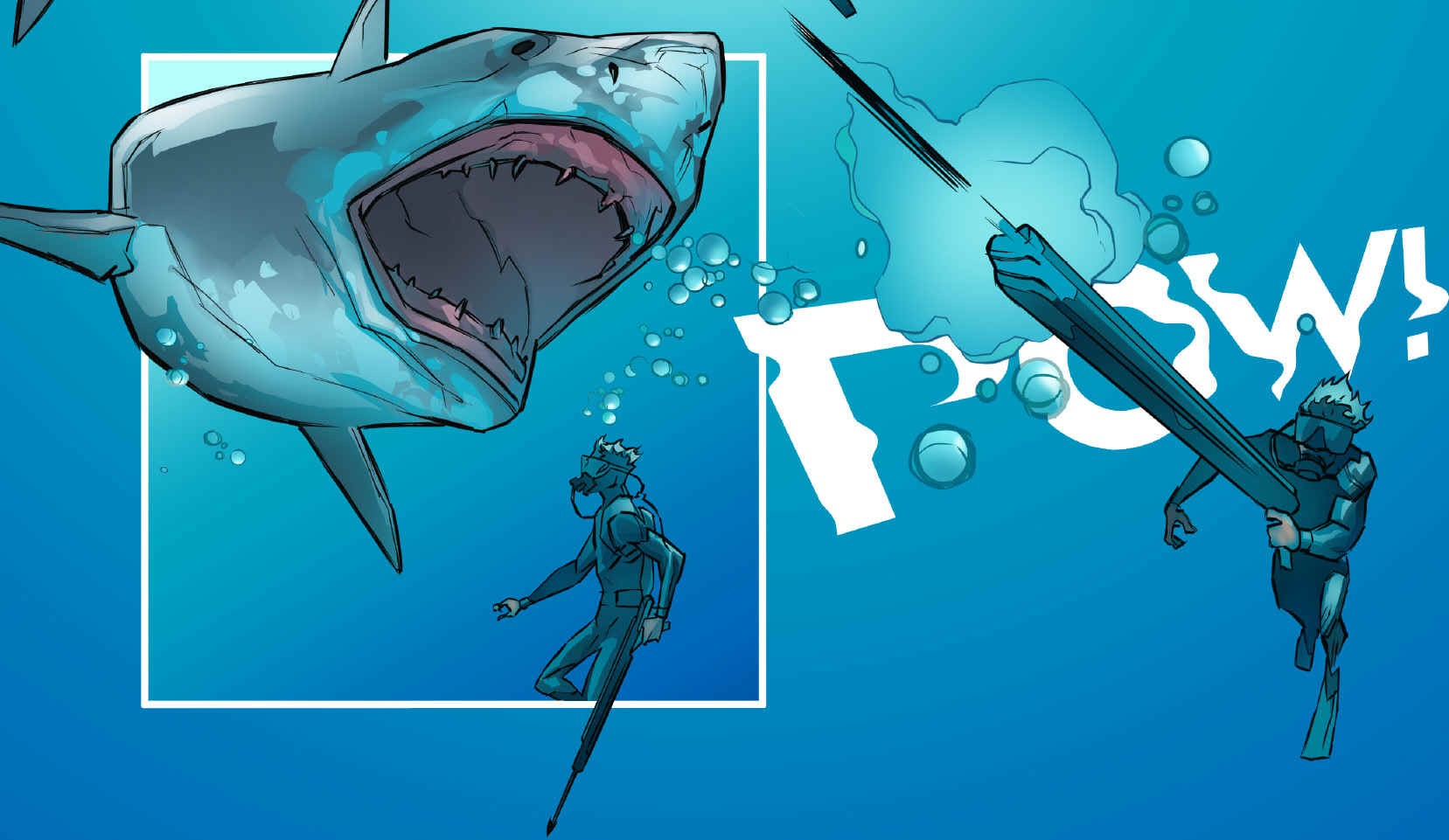|
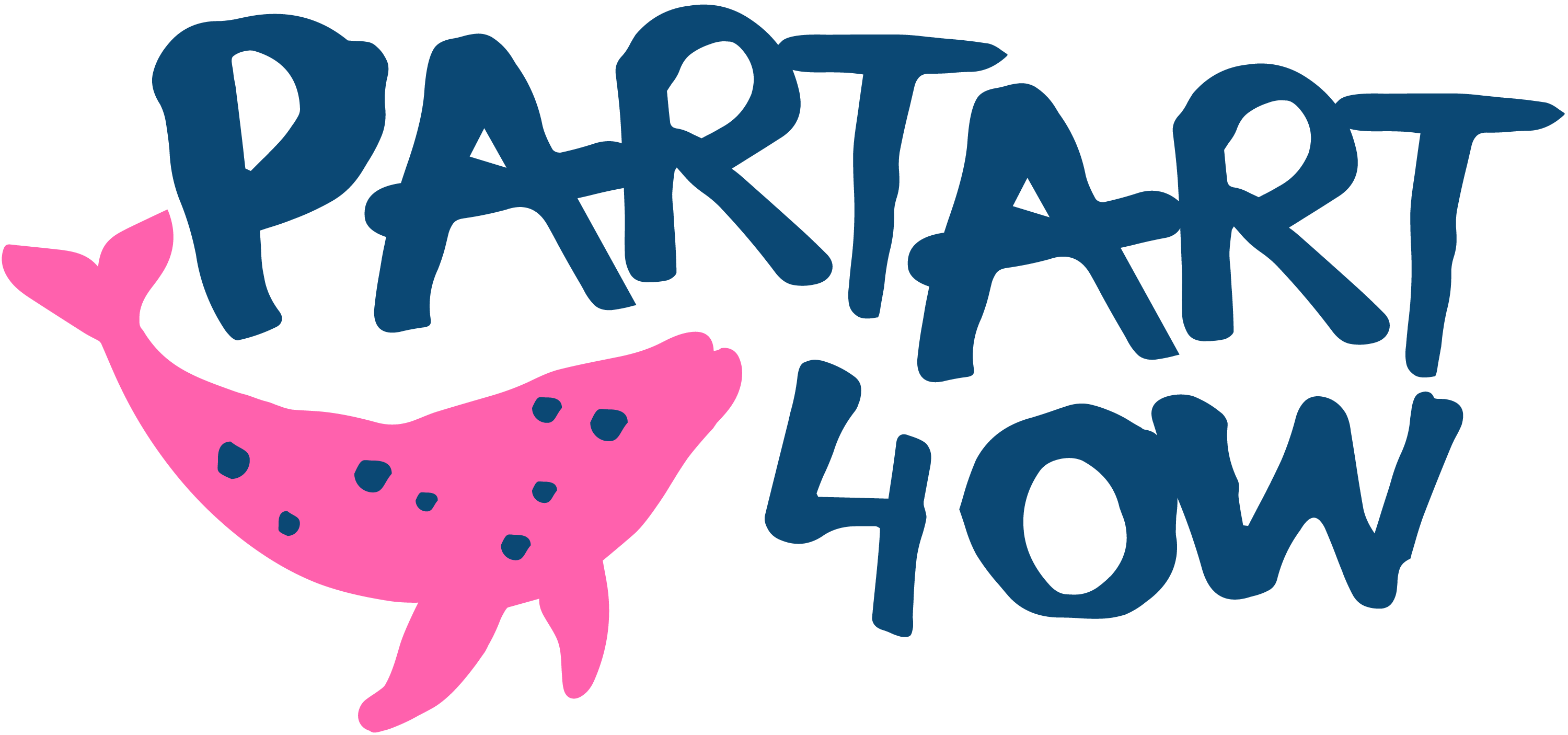
PartArt4OW is looking for interdisciplinary and intersectoral projects mixing art, science and participatory practices in innovative ways.
They believe that collaborations between the creative and cultural sectors, the scientific community and the civic society organisations can lead to stronger
projects, to:
➨ increase citizens’ ocean literacy
➨ increase awareness on the challenges and pressures faced by the ocean and inland waters
➨ mobilise citizens and stakeholders for the protection and restoration of oceans and inland waters
We
are of the same view, looking to make our Kulo-Luna ocean awareness
adventure into a literacy tool and encourage artists to express
themselves using the latest techniques. To spread the awful truth
about ocean pollution, both from plastics, dirty diesel exhausts,
and those nasty ghost fishing
nets. All of which is part of the
story where our intrepid hero abandons a solar boat race to save an
injured humpback whale. We hope this story may eventually become a feature
or TV film, animation, and
even Anime.
THE
CHALLENGE
The challenge is to engage local communities in protecting and restoring marine and freshwater ecosystems and
biodiversity.
Participants might explore the many aspects and threats related to ocean and water biodiversity (such as biodiversity loss,
algae
proliferation, alien species, just to name a few).
PartArt4OW IS PARTICULARLY INTERESTED IN
Unseen phenomena, such as those related to climate change or those that cannot be seen because we are too disconnected from the ocean to perceive its changes.
The interdependencies between different aspects of their challenge
may choose to target: natural, cultural, political, and related societal implications.
Projects can focus on ocean or inland waters or on both at the same time. The focus should be on the communities living in close proximity to the ocean,
water basins and
rivers and assure that the project proposed addresses key societal and environmental challenges of those communities.
PartArt4OW is committed to making ocean literacy accessible to all, thus priority will be given to projects involving people from under-represented groups and/or groups at risk of social exclusion and/or discrimination. Special attention
could be given to people with low exposure to
art and science and with scarce cultural consumption and
educational opportunities.
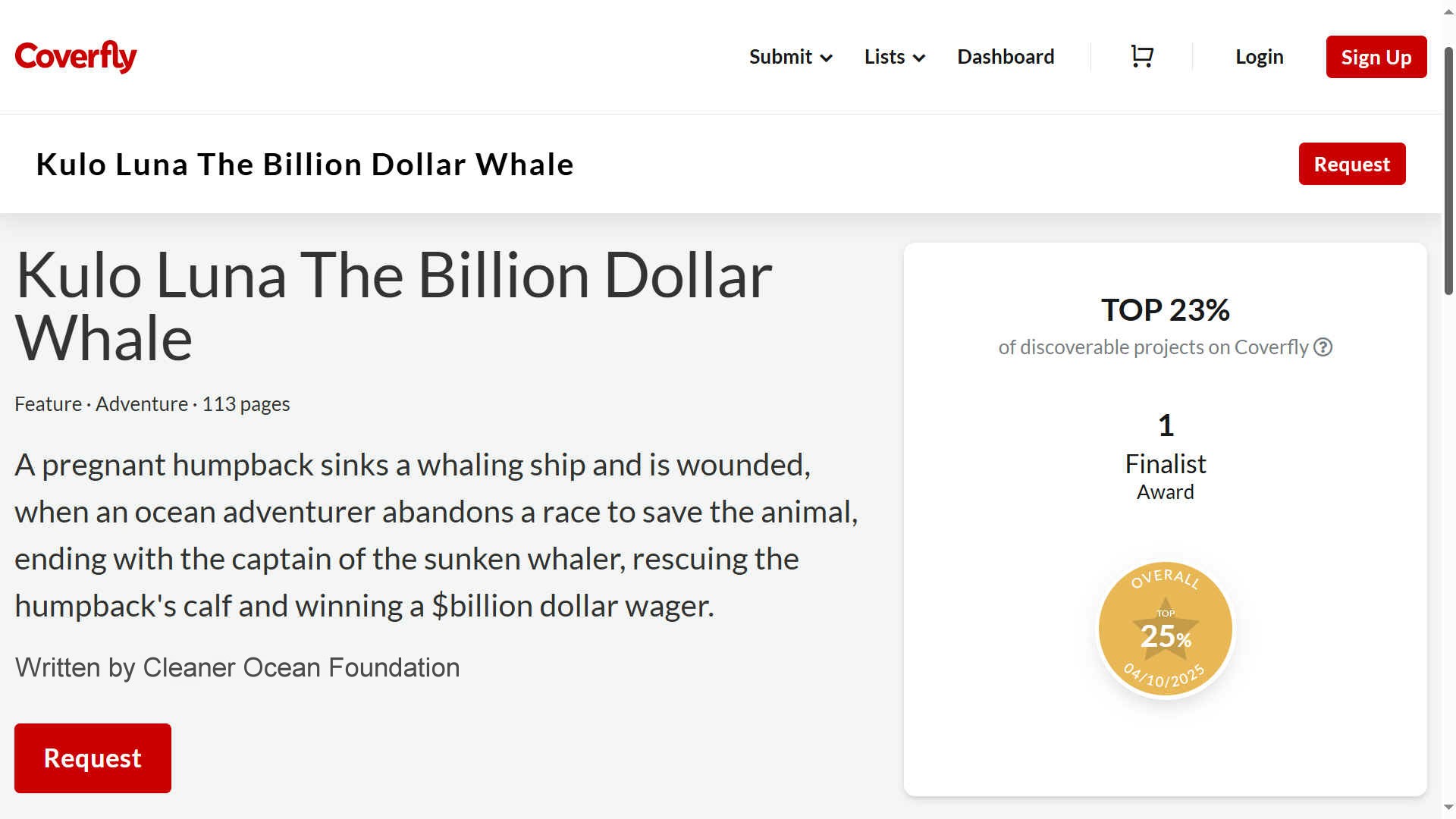
WALKING THE TALK
PartArt4OW EXPECTS projects to be fully sustainable, including the use of sustainable materials,
circular solutions and
renewable
energy. Proposals must commit to a Climate Pact Pledge and should work towards full decarbonisation or at least
carbon neutrality of the project and of all their proposed activities.
Applicants must be established or resident in EU Member States or third countries in
Europe that are associated or negotiating an association agreement with
Horizon Europe
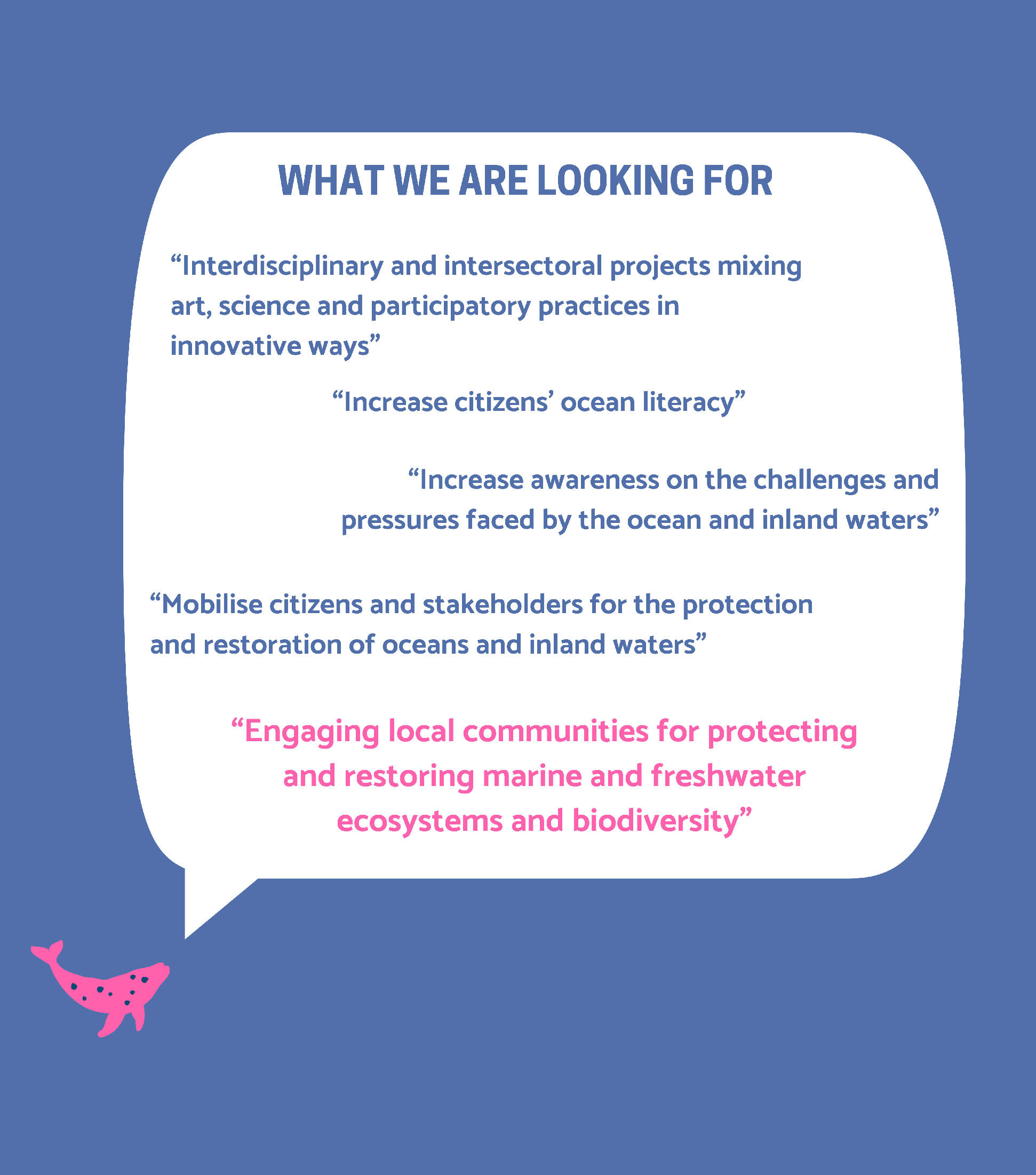 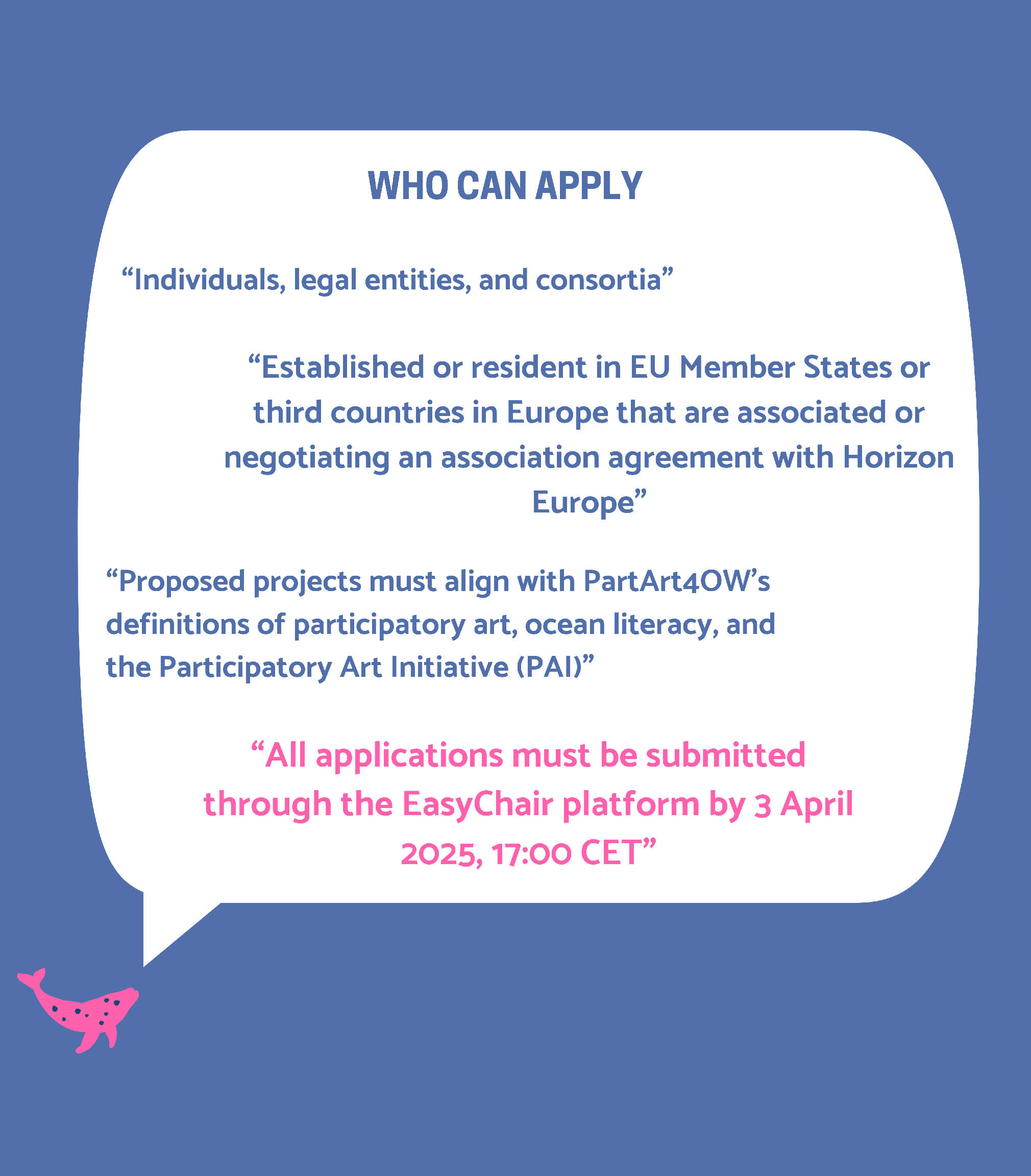

COULD
KULO-LUNA BECOME A MODERN MOBY DICK?
PartArt4OW -
Proposal for an adapted & illustrated version of the Kulo-Luna
script, with local exhibition & interactive art competition
2025. It's a tall order. Nobody wants to read 600 plus pages these
days. It's tricky to give one definitive page count for "Moby-Dick,"
as it varies significantly between editions. The original 1851 U.S.
(American) edition of "Moby-Dick" was around 635 pages.
Modern editions, especially those with critical apparatus or
extensive notes, can vary widely. Some Penguin Classics editions,
for example, can run to over 700 pages. The condensed versions are
more popular, around 200-300 pages.
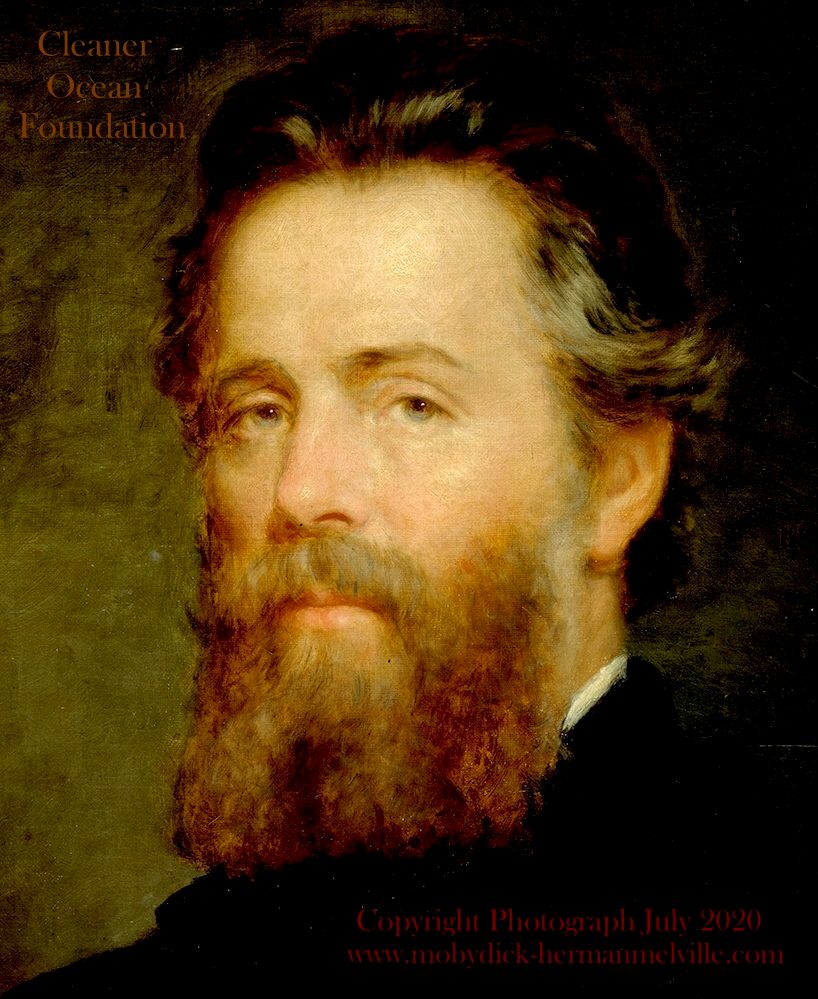
On
the basis of being a Cli-Fi, rather than an in depth fictionalization
of a real voyage, as per Herman Melville's treatise, "The
$Billion Dollar Whale" is unlikely to follow in the footsteps
of Moby-Dick. Though is very much inspired by the American classic.
The
novel will be available on Amazon, offered to schools and colleges
at a discount rate, and available in libraries. Local educational
entities might visit the exhibition at the Museum in Herstmonceux, East
Sussex, not far from the famous Herstmonceux
Castle Estate, as an inspirational local
venue, where they might take photographs of the exhibition halls,
etc. A tour guide will be available to explain and (where
applicable) show the exhibits in action. Most notably their wind
tunnel, water
test tank and the solar tracking system on the Elizabeth
Swann model, at the cutting edge of solar and hydrogen technology.
The best artwork from local artists will be exhibited in the
"Plastic Hall." With certificates going to the winners and
runners up, together with a specially commissioned and limited
edition 'Kulo-Luna' mug or pen.
|
|
|
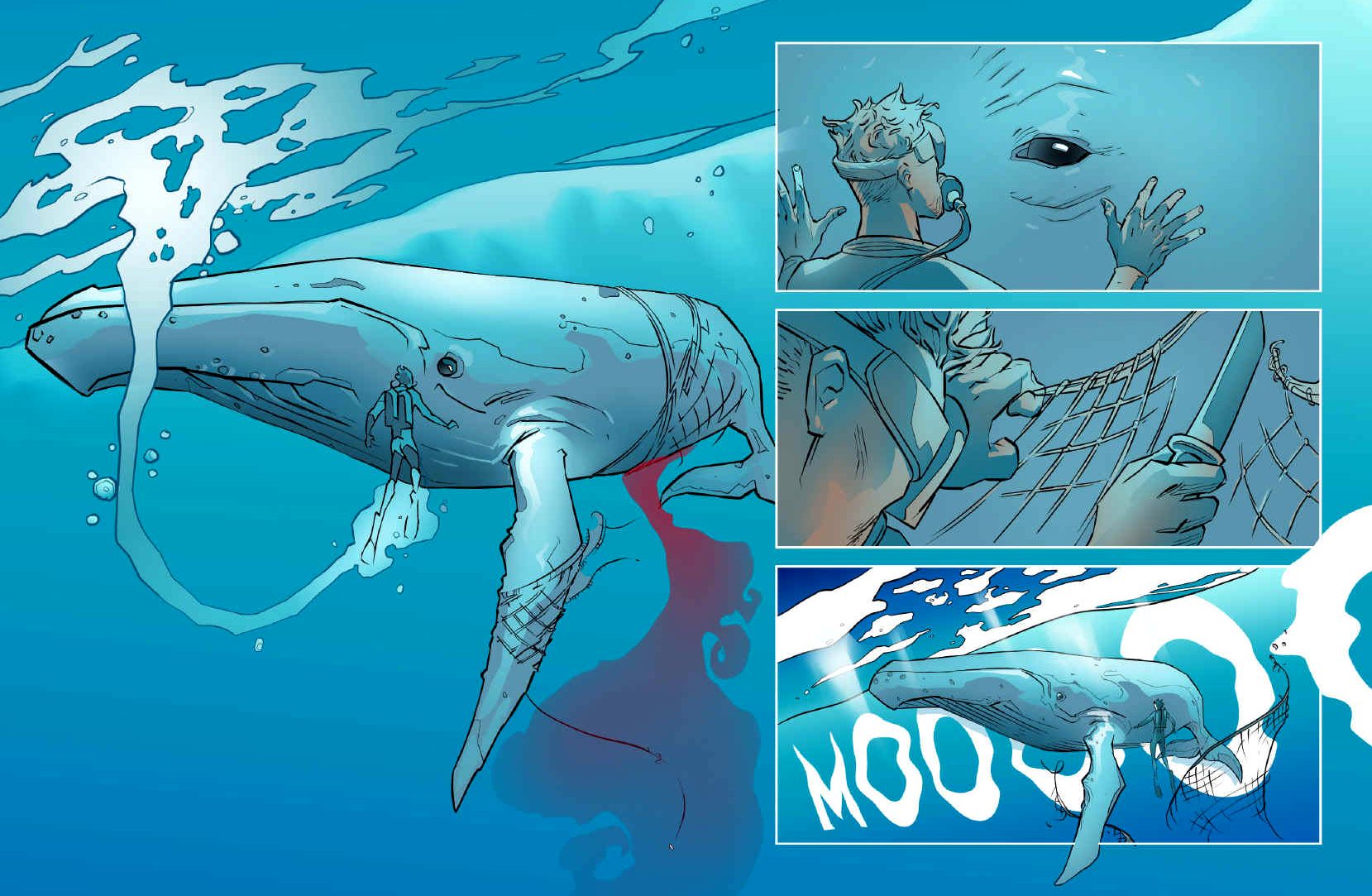
John is captain of the
Elizabeth Swann,
a solar and wind powered craft, that he likes to cruise in, and race
occasionally. Fortunately for Kulo Luna, the Elizabeth Swann is not only
swift, but superbly equipped for scientific and ocean conservation tasks.
The Swann is the kind of vessel James Bond and 'Q' Branch would
envy. It is stacked full of juicy ocean tech. John inherited the craft from his
genius uncle, as a puzzle to be completed. It is zero emission,
using solar
panels
that track the sun and a turbine that hunts for wind automatically,
to generate clean electricity for propulsion. A feat Captain Nemo would
endorse.
The
Swann is AI smart. There is an onboard computer that takes care of
navigation. The Swann is
the RoboTaxi of the
ocean. It
pilots itself when the crew get tired or need a hand. The Swann is ultra
economical,
powered by free energy from nature. The boat is a character in the
story. It is based on real-life energy and hull studies. The vessel could
be constructed tomorrow with all the features in this story, including autonomous
navigation - a dream situation for special effects departments. Kulo
Luna is a modern Moby
Dick, with a twist, in that there is a happy ending for everyone in this
story,
including the whalers.
Herman
Melville might
approve, the embittered Captain
Ahab may not.
|
|
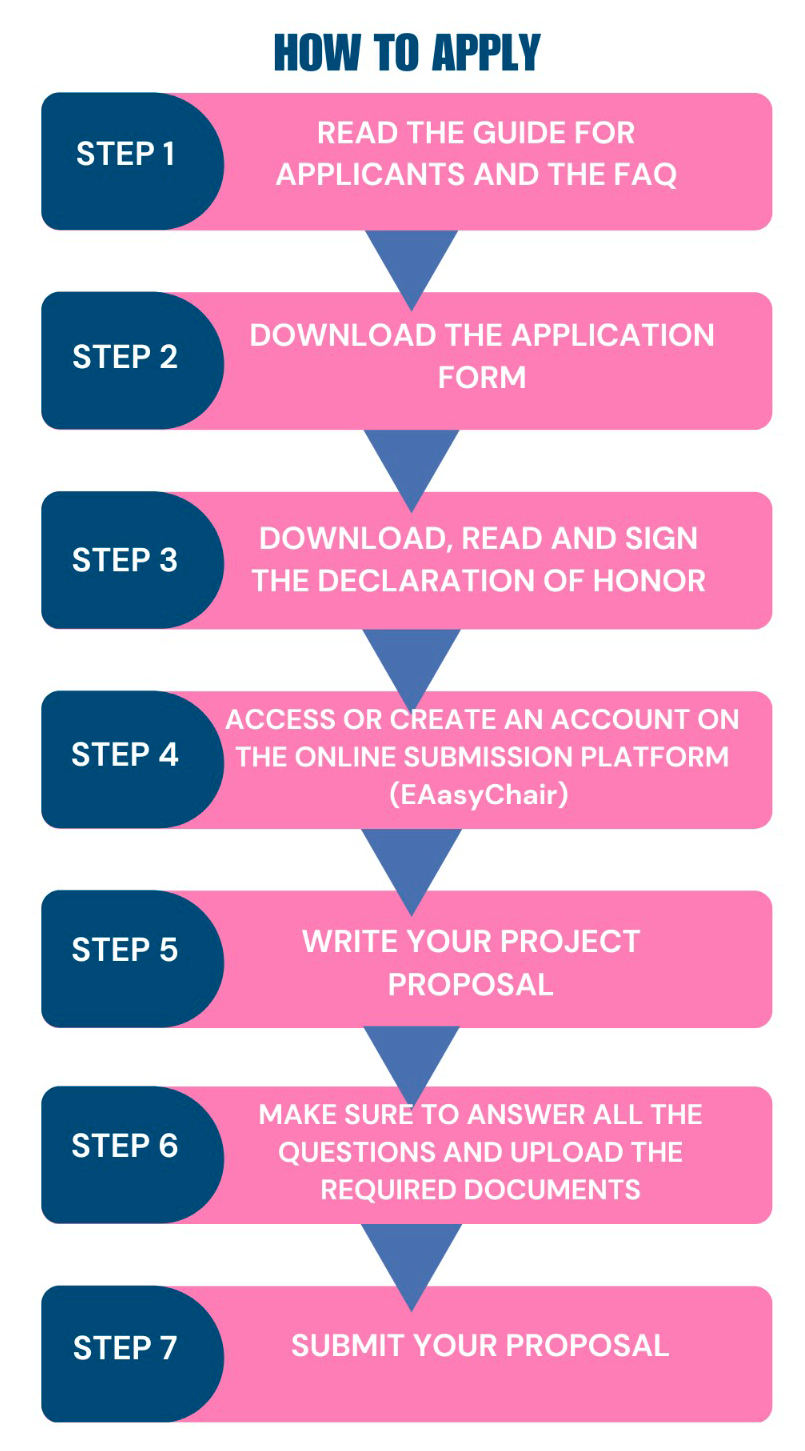
WAS
HERMAN MELVILLE THE FIRST OCEAN ACTIVIST?
Herman
Melville's Moby Dick is a classic American novel that tells the
story of Captain
Ahab's obsessive pursuit of a white sperm whale named Moby Dick.
The novel is a complex exploration of themes such as revenge,
obsession, the relationship between man and nature, and the
destructive power of human ambition. How might that equate to the
EU's PartArt4OW call?
Moby Dick has also been interpreted as an anti-whaling novel, with
some critics arguing that Melville used the story to expose the
brutality and cruelty of the whaling industry. The novel's portrayal
of the whale as a majestic and intelligent creature, capable of
inspiring awe and fear, has resonated with readers for generations.
Ahab's Obsession and the Whale's Revenge
Captain Ahab's monomania is driven by a deep-seated desire for
revenge. In a previous encounter, Moby Dick bit off Ahab's leg,
leaving him permanently disabled and consumed by a lust for
vengeance. Ahab's obsession with the whale blinds him to the dangers
of his pursuit, leading him and his crew to their doom.
The novel depicts the whale as a powerful and intelligent creature,
capable of outwitting and destroying its human adversaries. Moby
Dick's actions are not portrayed as mindless or malicious, but
rather as a response to the aggression and violence of the whalers.
In this sense, the whale can be seen as a symbol of nature's power
and the futility of human attempts to dominate it.

The
Cruelty of Whaling
Moby Dick also provides a vivid portrayal of the harsh realities of
whaling. The novel describes the physical and emotional toll of the
whaling voyage, the brutality of the hunt, and the environmental
impact of the industry. Melville's descriptions of the whale hunt
are often graphic and disturbing, highlighting the suffering of both
the whales and the whalers.
The novel's publication coincided with a growing public awareness of
the environmental impact of whaling. In the mid-19th century, as
whale populations began to decline, there was a growing movement to
protect these animals. Moby Dick helped to raise awareness of the
plight of whales and contributed to the growing public opposition to
whaling.
A
Timeless Tale of Obsession and Revenge
Moby Dick is a complex and multifaceted novel that continues to
resonate with readers today. Its exploration of themes such as
obsession, revenge, and the relationship between man and nature
remains relevant, as does its critique of the destructive power of
human ambition. The novel's portrayal of the whale as a powerful and
intelligent creature has also helped to raise awareness of the
importance of protecting these magnificent animals.
In addition to the themes mentioned above, Moby Dick also explores a
number of other important ideas, including:
- The nature of evil
- The search for meaning and purpose
- The limits of human knowledge and understanding
- The power of the natural world
Moby Dick is a timeless classic that continues to challenge and
inspire readers. Its exploration of the complex relationship between
man and nature, and its critique of the destructive power of human
ambition, remain as relevant today as they were when the novel was
first published.
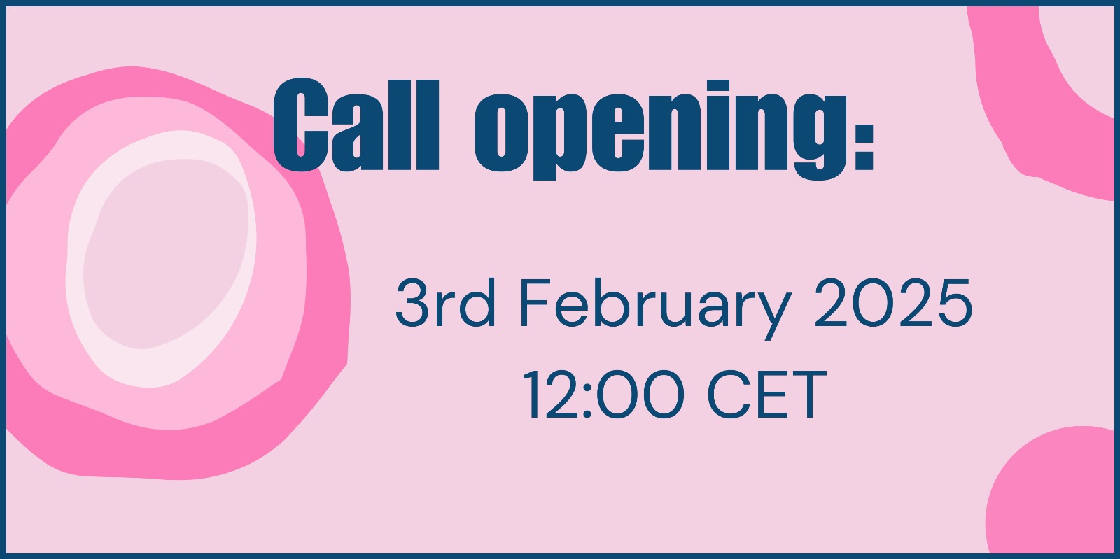


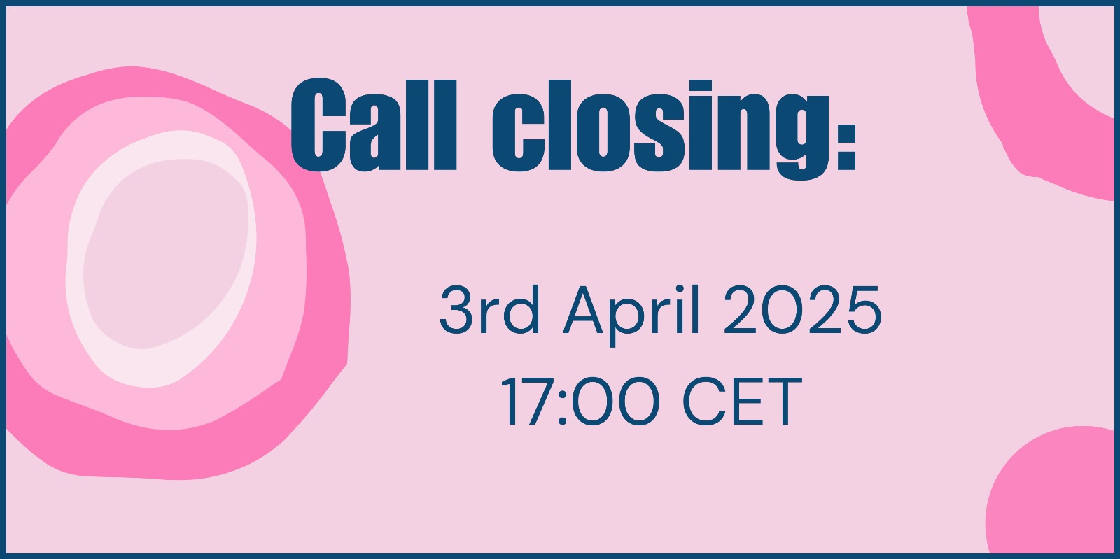
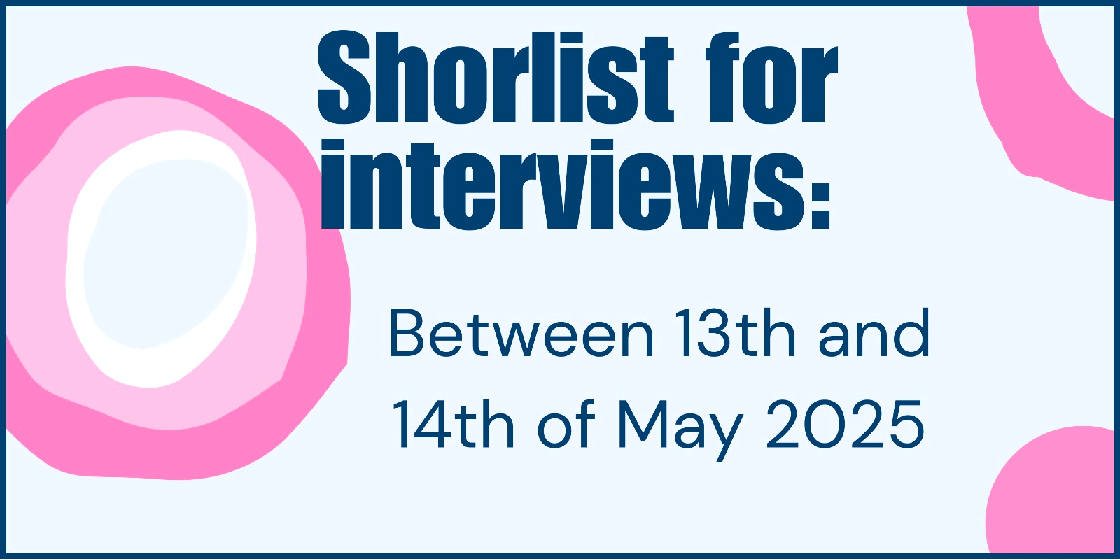
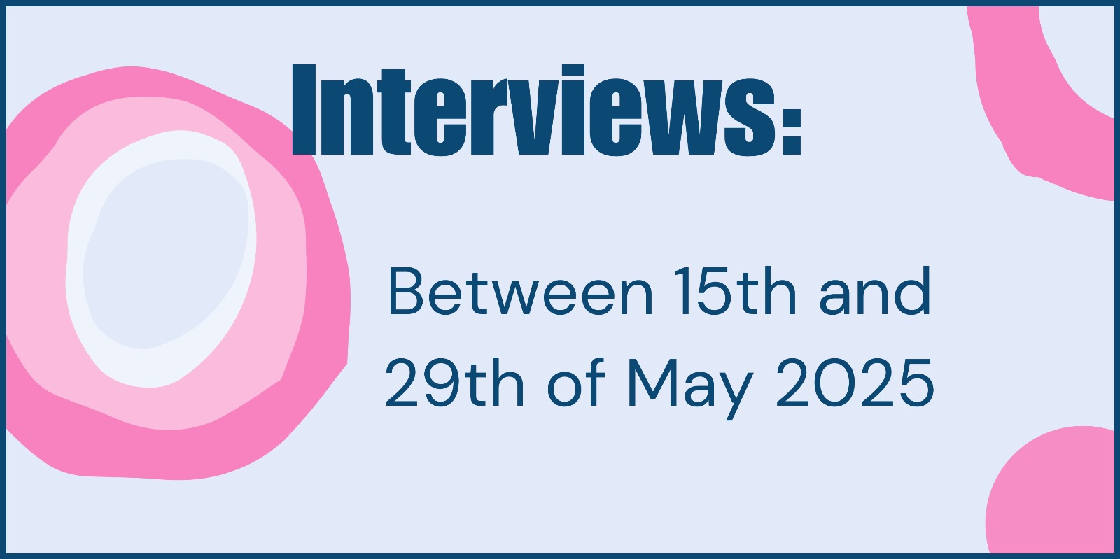
CONTACTS
All the information you need about the open call, the evaluation process and the accelerator are in the Guidelines for Applicants and their
FAQs. If you need any further assistance please contact:
opencall@partart4ow.eu
PartArt4OW is funded by the European Union’s Horizon Europe research and innovation programme.
https://partart4ow.eu/
https://partart4ow.eu/
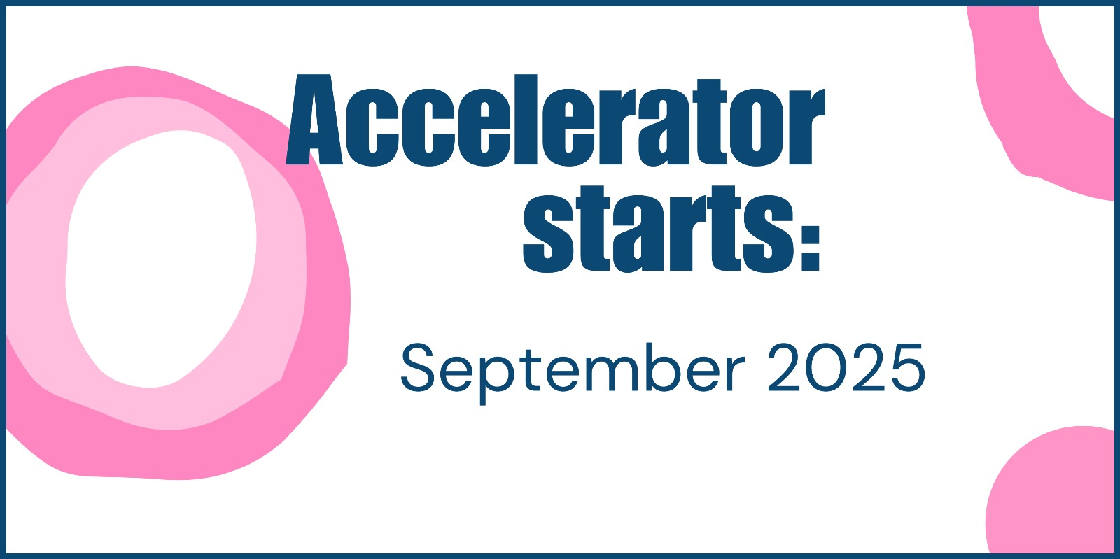
|
|
|
THE
WHALE'S ADVOCATE: HOW HERMAN MELVILLE'S "MOBY-DICK" CHANGED OUR
VIEW OF THE DEEP
In the annals of literature, few works have so profoundly shaped our
understanding of the natural world as Herman Melville's "Moby-Dick."
Beyond its epic tale of obsession and revenge, this 1851 masterpiece stands
as a powerful, albeit unintentional, testament to the majesty of whales and
a stark indictment of the brutal whaling industry that threatened their very
existence. Was Melville, the struggling author who penned this sprawling
saga, the first ocean awareness activist? While he might not have wielded
placards or penned political manifestos, his art spoke volumes, echoing
through the decades to resonate with a modern world grappling with
ecological crisis.
Melville, a man intimately acquainted with the sea's vastness, having served
aboard whaling ships himself, imbued "Moby-Dick" with a visceral
understanding of the ocean's creatures. He painted whales not as monstrous
leviathans, as was common in the popular imagination, but as sentient
beings, worthy of awe and respect. Moby Dick, the iconic white sperm whale,
becomes more than just a symbol of Ahab's obsession; he embodies the raw,
untamed power of nature, a force to be reckoned with.
The novel's unflinching portrayal of the whaling industry's cruelty is
equally impactful. Melville's descriptions of the harpooning, the butchery,
the sheer industrial scale of the slaughter, are harrowing. He doesn't shy
away from the blood and the suffering, forcing readers to confront the moral
implications of humanity's relentless pursuit of profit. In an age where the
natural world was seen as a resource to be exploited, Melville dared to
humanize the hunted.
Yet, Melville's activism was not overt. "Moby-Dick" was not a call
to arms, but a work of art, rich in symbolism and philosophical depth. It
was a story that seeped into the collective consciousness, slowly altering
perceptions, fostering empathy where there had been none. Though initially
met with critical indifference and financial ruin, the novel's power
endured.
While Melville toiled in obscurity, his words were quietly shaping a new
narrative. He challenged the prevailing view of whales as mere commodities,
planting the seeds of a nascent environmental consciousness. The image of
the noble whale, fighting for survival against relentless human aggression,
resonated with later generations, fueling the growing movement to protect
these magnificent creatures.
Was Melville the first ocean awareness activist? Perhaps not in the
traditional sense. But his legacy is undeniable. He used the power of
storytelling to illuminate the plight of whales, to make us see them not as
beasts, but as beings deserving of our respect. His "Moby-Dick"
remains a potent reminder of humanity's capacity for both wonder and
destruction, a call to reflect on our relationship with the natural world.
Today, as we grapple with the consequences of environmental degradation,
Melville's message rings truer than ever. His work stands as a testament to
the enduring power of art to inspire change, to awaken our conscience, and
to remind us that the fate of the ocean's giants is inextricably linked to
our own.
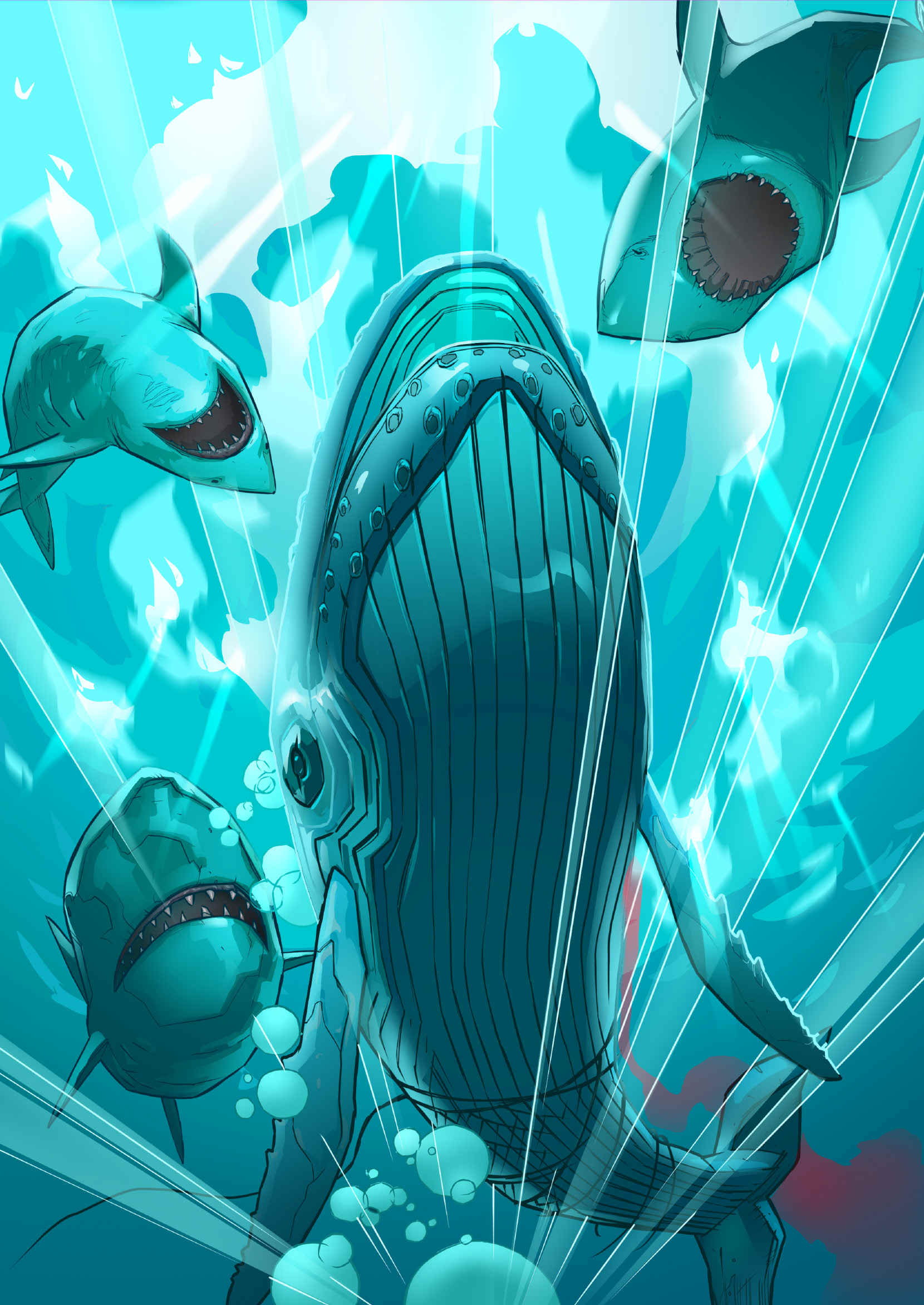
Helplessly
trapped in discarded fishing gear, Kulo-Luna is not long for this world, her
wound tainting the water with blood that is a calling card to all sharks in
her location.
Participatory
Art for society engagement with Ocean and Water (PartArt4OW)” is a
30-months Horizon Europe coordination and support action funded by the
European Commission under the HORIZON-MISS-2023-OCEAN-01-11 (Ocean &
water and arts: the contribution of creative sectors to Mission
Ocean and waters).
In line with the objectives of “Mission Restore our Ocean and Waters by
2030” and the Ocean
Decade, PartArt4OW aims to:
- Strengthen the emotional attachment between society and the oceans and
waters;
- Raise
awareness of ocean and water challenges;
- Develop
a strong transdisciplinary and trans-European network of artistic and
creative communities to protect and restore oceans and inland water;
- Support
policymakers in working towards sustainable ocean and water policies.
To
this end, PartArt4OW focuses on
participatory art and creative processes on the belief that participation
can bring about a deeper engagement of people with the problem of ocean and
water health by performing arts themselves.
Building upon the belief that art and the creative sector can contribute to
the EU Mission Starfish 2030 priorities, PartArt4Ocean mobilises artists,
citizens and other stakeholders in realising 20 multi-stakeholder
Participatory Art Initiatives. All modes of artistic expression and
synergies with EU-funded projects are welcome.
Selected Participatory Art Initiatives receive physical resources, human
capital such as training, experience, mentorship, relationships and
feedback, and organisational capital such as structure, planning,
monitoring, and internal relationships, through a PartArt4OW Accelerator
Program. To support Participatory Art Initiatives, PartArt4OW also
organises stakeholder engagement and ecosystem-building activities,
including Ambassadors Network engaged in mutual learning exercise and the
operationalization of PartArt Sailing Lab equipped with sustainable sailing
and artistic production facilities on board to visit and connect creative
communities engaged in Participatory Art Initiatives.
The project has been endorsed by the United
Nations Ocean Decade programme as a Decade Action.




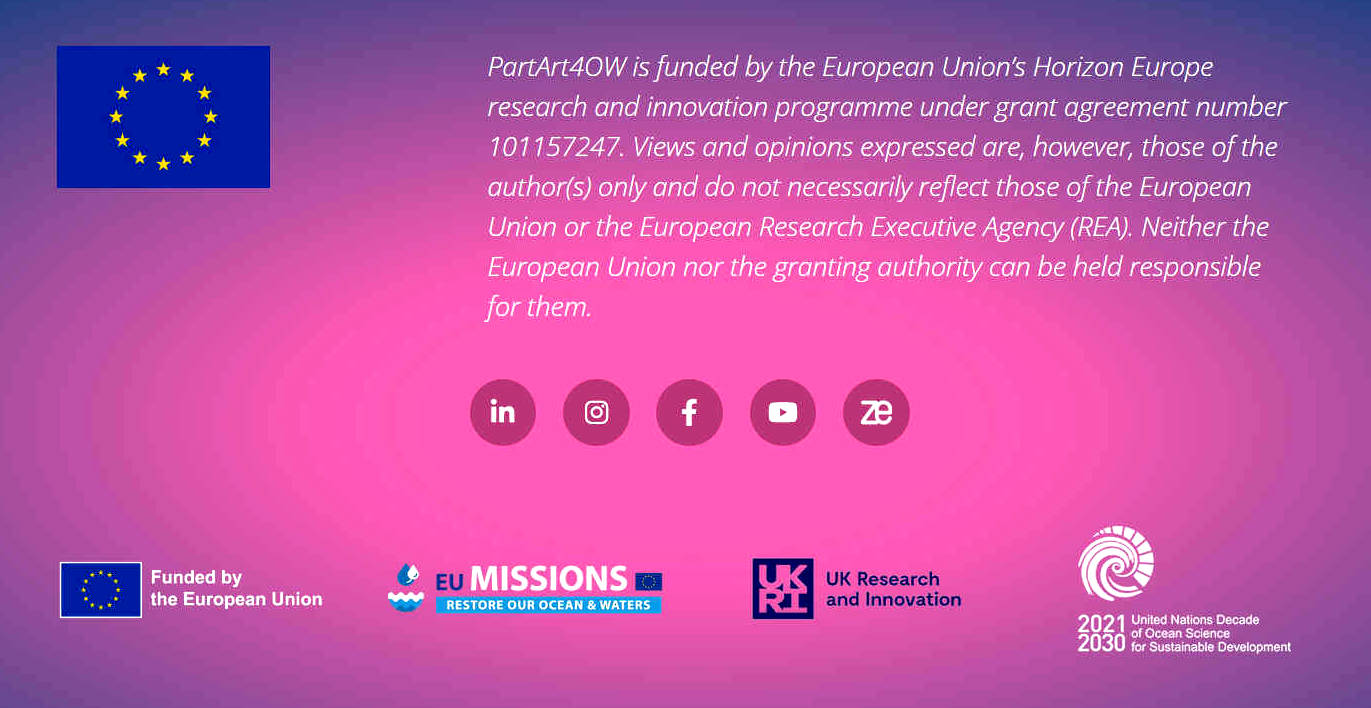
|
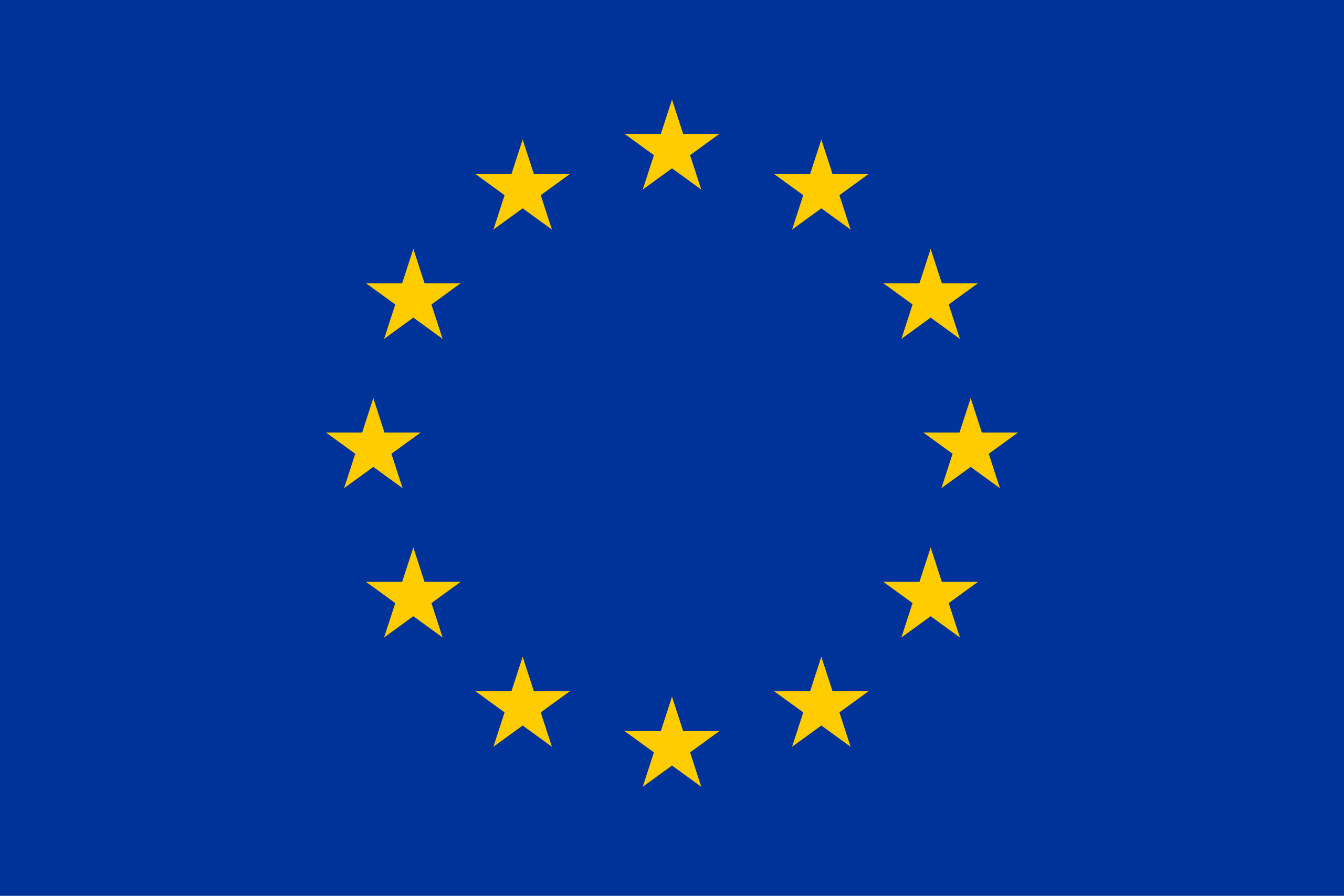 PARTART4OW
-
PARTART4OW
-
